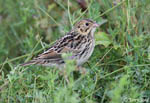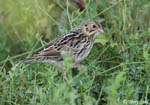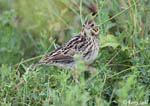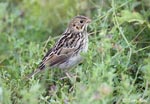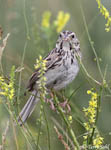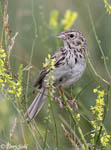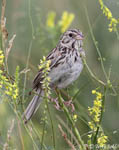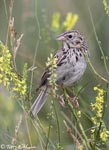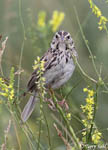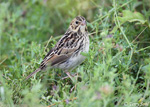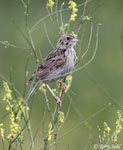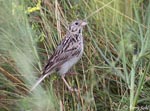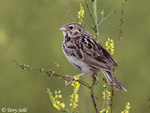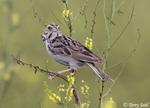| Length: 5.5 inches | Wingspan: 8.5 inches | Seasonality: Summer / Migrant |
| ID Keys: Mustard-yellow tinge on head, short-tailed, dark streaks on chest | ||
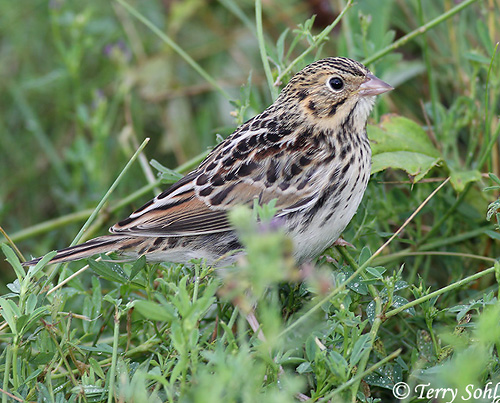 Baird's Sparrows only
inhabit a small portion of their former range, due to their strong preference
for native prairie for nesting. As with other closely-related species,
they are often difficult to observe, as they prefer to run along the ground
rather than flush. Baird's Sparrows have beautiful melodic songs compared
to their close relatives such as the Grasshopper Sparrow.
Baird's Sparrows only
inhabit a small portion of their former range, due to their strong preference
for native prairie for nesting. As with other closely-related species,
they are often difficult to observe, as they prefer to run along the ground
rather than flush. Baird's Sparrows have beautiful melodic songs compared
to their close relatives such as the Grasshopper Sparrow.
Habitat:
Breeds in native prairies of tall grasses and scattered weeds and brush. Will occasionally nest in wheat fields. Found in agricultural fields, grasslands, and prairies during migration.
Diet:
Primarily feeds on insects and spiders in the summer, along with seeds. Winter diet is primarily seeds of weeds and grasses.
Behavior:
Usually stays on the ground, foraging alone. They are only rarely found in the open, primarily only males when singing during the breeding season.
Nesting:
June and July
Interactive eBird Map:
Click to access an interactive eBird map of Baird's Sparrow sightings
Song:
A clear high-pitched jumble. The call is a high-pitched but quiet tweep.
Migration:
Summers locally in North Dakota, South Dakota, Montana, and adjacent portions of Canada. Winters in the extreme southwestern U.S. and southward.
Similar Species:
Grasshopper Sparrow, Savannah Sparrow
Conservation Status:
Has shown a great decline in numbers and range since the 1800's due to habitat loss.
Further Information:
- USGS Patuxent Bird Identification InfoCenter, Baird's Sparrow
- WhatBird - Baird's Sparrow
- Audubon Guide - Baird's Sparrow
Photo Information:
July 23rd, 2011 - Grand River National Grasslands, Perkins County, South Dakota - Terry Sohl
Additional Photos:
Click on the text links or image chips below for additional higher-resolution photos of this species.
| Click on the map below for a higher-resolution view |
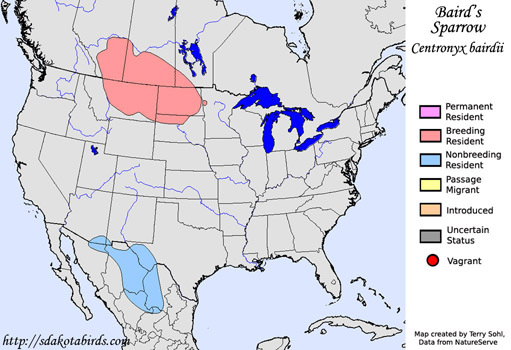 |
| South Dakota Status: Uncommon migrant and summer breeding resident in the northwest and northcentral part of the state. Rarely detected migrant in the remainder of the state. |
Additional Baird's Sparrow Photos
Click for a higher-resolution version of these photos